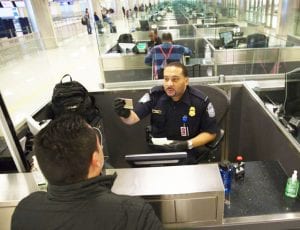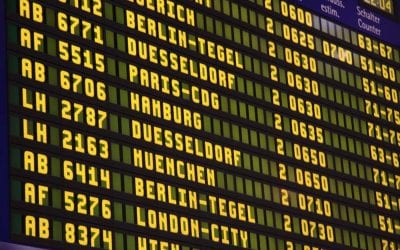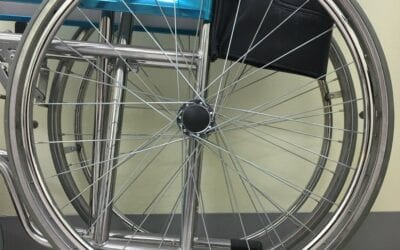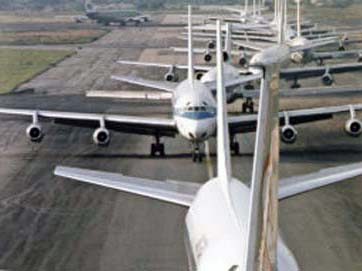Current U.S. travel and border policies for COVID-19 protection are broken and failing the nation.
 The U.S. border has been closed to citizens of the European Union and the United Kingdom for more than 540 days. Our COVID border protection system has been open to citizens of many other countries, some of which are COVID-19 infection hotspots. The current U.S. travel and border COVID-19 policies are broken. Our COVID border protection system shuts out visitors from countries with low infection rates while allowing entry to others from countries with infection rates more than twice that of ours.
The U.S. border has been closed to citizens of the European Union and the United Kingdom for more than 540 days. Our COVID border protection system has been open to citizens of many other countries, some of which are COVID-19 infection hotspots. The current U.S. travel and border COVID-19 policies are broken. Our COVID border protection system shuts out visitors from countries with low infection rates while allowing entry to others from countries with infection rates more than twice that of ours.
To fully reopen U.S. borders to international visitors the Biden Administration must fully revamp U.S. COVID-19 border protections.
Last week, ASTA, the American Society of Travel Advisors, spoke about a plan to reopen U.S. borders to more international visitors.
“A plan to restart international travel is long overdue. We urge the Biden Administration to finalize this plan as quickly as possible and to otherwise make safely restarting international travel occur by opening borders an immediate priority.”
Can the U.S. safely fully open its borders to international visitors during the COVID-19 pandemic?
U.S. COVID border protection policies block travelers from European countries with low COVID-19 infection rates and permit travelers from COVID hotspots.
Since the pandemic began, U.S. COVID border protection policies have changed little. We block non-essential travelers from Canada and European nations, for example. But we’re permitting citizens of countries such as Grenada and Malaysia to travel to the U.S. They are two of the world’s COVID-19 hotspots. America has essentially ignored national infection rates.
The U.S. hasn’t considered national vaccination rates or whether individual international travelers are vaccinated. The U.S. initially led the world in vaccinations. But it’s since fallen behind many countries. Only 55.2 percent of the U.S. is fully vaccinated. France has fully vaccinated 64.2 percent of its population and the United Kingdom has fully vaccinated 66.4 percent of its people. Both remain on the U.S. prohibited travel list. Malaysia and Grenada are both allowed entry. Malaysia, one of the hotspots I mentioned has fully vaccinated 57.2 percent of their population. Grenada has fully vaccinated only 17.5 percent of its people.
COVID-19 testing is required for international visitors, for what it’s worth. Travelers need to test negative from either an Antigen or PCR test within three days of their departure for the U.S. or provide documentation that they’ve recovered from COVID-19 within 90 days of departure. No quarantine of any length is required.
Antigen and PCR COVID tests are of limited value when not used with requirements such as quarantine and/or vaccination.
Both antigen and PCR COVID tests are of seriously limited value when not used with other requirements. Quarantine and/or vaccination must be included. The U.S. requires neither. To understand why, it’s necessary to learn something about the COVID-19 virus itself. The virus’ incubation period is two weeks. But those infected with COVID-19 typically become symptomatic about five days after they’re infected.
A study of false-negative rates of PCR testing of COVID-19 (SARS-CoV-2) was published last year in the American College of Physicians Annals of Internal Medicine (AIM). PCR testing is considered the most accurate test method for COVID-19. The study estimated that during the four days of infection prior to symptoms, typically the fifth day, the probability of getting a false negative test result ranged from 100 percent on the day after infection to a mean of 67 percent on the fourth day. On the fifth day, when most people infected with COVID-19 first have symptoms, the false-negative rate is still 38 percent. So often, the “gold standard” test will produce a negative test result almost four out of ten times.
Antigen tests are even more unreliable than PCR COVID tests.
The Antigen test is less reliable than the PCR test. According to medical experts, it has the potential to produce false negatives at a rate that’s 30 percent higher than PCR testing.
Due to the problem of false-negative test results, it’s clear that depending upon COVID-19 testing alone is not a reasonable method to keep COVID infected travelers from entering the U.S.
READ ALSO: The CDC’s strong hand to stop a contagious COVID traveler
Here’s a roadmap for U.S. travel and border COVID-19 policy that would permit international travel while minimizing the risk that infected travelers would enter the nation.
Let’s look at what we could do to have a sensible, worthwhile, consistent U.S. travel and border COVID-19 policy. We need a system that will permit international travel to our country while at the same time protecting against infected travelers entering the nation. The U.S. should:
- Only permit fully vaccinated international travelers to enter the U.S. To eliminate the problem of which vaccines to permit for visitors, the U.S. should recognize all vaccines that have received emergency use authorization from WHO (World Health Organization), unless they have been rejected by the U.S. Food and Drug Administration (FDA).
- Require a negative PCR COVID test taken within 72 hours of departure to the U.S. for each international traveler.
- Require each international traveler to provide a complete U.S. itinerary to Customs and Border Protection, for potential contact tracing.
- Create a commonsense prohibited traveler list based on current monthly infection rates and national vaccination statistics, to be reviewed/amended on an every-other-month basis.
Travel and border COVID-19 policies are inconsistent, problematic, and are failing to help keep Americans safe. Reopening the country to international visitors must be accomplished using consistent measures. We need protocols that will treat international travelers fairly while minimizing the potential infection risk they would pose to the American people.
After many years working in corporate America as a chemical engineer, executive and eventually CFO of a multinational manufacturer, Ned founded a tech consulting company and later restarted NSL Photography, his photography business. Before entering the corporate world, Ned worked as a Public Health Engineer for the Philadelphia Department of Public Health. As a well known corporate, travel and wildlife photographer, Ned travels the world writing about travel and photography, as well as running photography workshops, seminars and photowalks. Visit Ned’s Photography Blog and Galleries.



